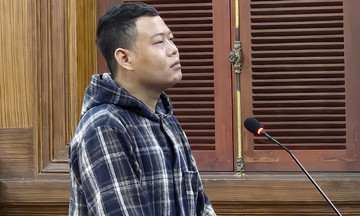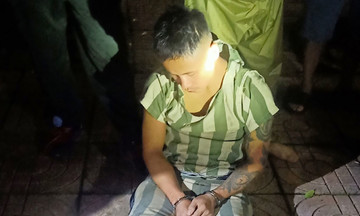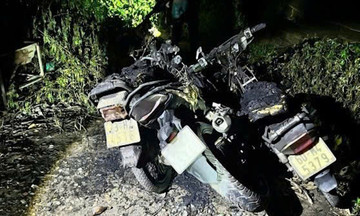On the morning of Thursday, 7/7/2005, a light rain fell on London. The city had just been awarded the 2012 Olympic Games, and newspapers buzzed with the news of Britain's triumph. Within hours, however, jubilation turned to tragedy.
At 4 a.m., Mohammad Sidique Khan, 30, Shehzad Tanweer, 22, and Hasib Hussain, 18, left their rented apartment in Leeds – their "bomb factory" – and drove to Luton. The bombers were unknown to authorities.
At 5:05 a.m., Germaine Lindsay, 19, the fourth bomber, arrived at Luton station and slept in his car awaiting his accomplices.
At 6:51 a.m., the four men gathered in the Luton station parking lot. They retrieved large backpacks from their car trunks, each containing 2 to 5 kg of explosives. Nail bombs were left in their rented Nissan Micra.
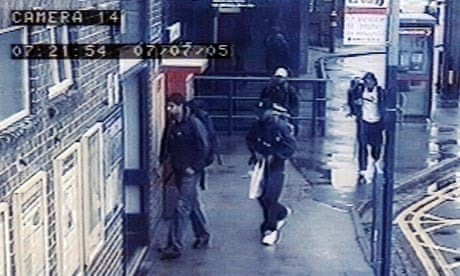 |
From left: Hasib Hussain, Germaine Lindsay, Mohammed Sidique Khan, and Shehzad Tanweer are pictured on CCTV at Luton station on 7/7/2005. Photo: Reuters |
From left: Hasib Hussain, Germaine Lindsay, Mohammed Sidique Khan, and Shehzad Tanweer are pictured on CCTV at Luton station on 7/7/2005. Photo: Reuters
At 7:24 a.m., the four boarded a delayed train from Bedford to Brighton, changing lines at London King's Cross station. They appeared relaxed and cheerful.
At 8:23 a.m., the bombers disembarked at King's Cross, embracing before separating at the London Underground station. Khan, the ringleader, boarded a westbound Circle Line train; Tanweer took an eastbound Circle Line train; and Lindsay boarded a southbound Piccadilly Line train. Hussain headed towards the Piccadilly Line entrance but left King's Cross station after failing to board a train.
Three explosions ripped through the Underground system.
At 8:49 a.m., three bombs detonated on Underground trains within 50 seconds of each other. The first was detonated by Tanweer on a six-car Circle Line train between Liverpool Street and Aldgate stations, killing 7 people.
The second bomb, detonated by Khan on a Circle Line train that had just left Edgware Road station and was heading west to Paddington, killed 6 people. Seconds later, Lindsay, traveling on the crowded Piccadilly Line, detonated his backpack between King's Cross and Russell Square stations, killing 26 people.
Michael Henning, a 39-year-old bank worker, survived because he missed his usual train. He was waiting for the next one when the first bomb exploded. "There was a flash and then everything went dark. You couldn't see anything, just hear screaming. We tried to find our way out, leaving behind a scene of devastation," Henning recalled.
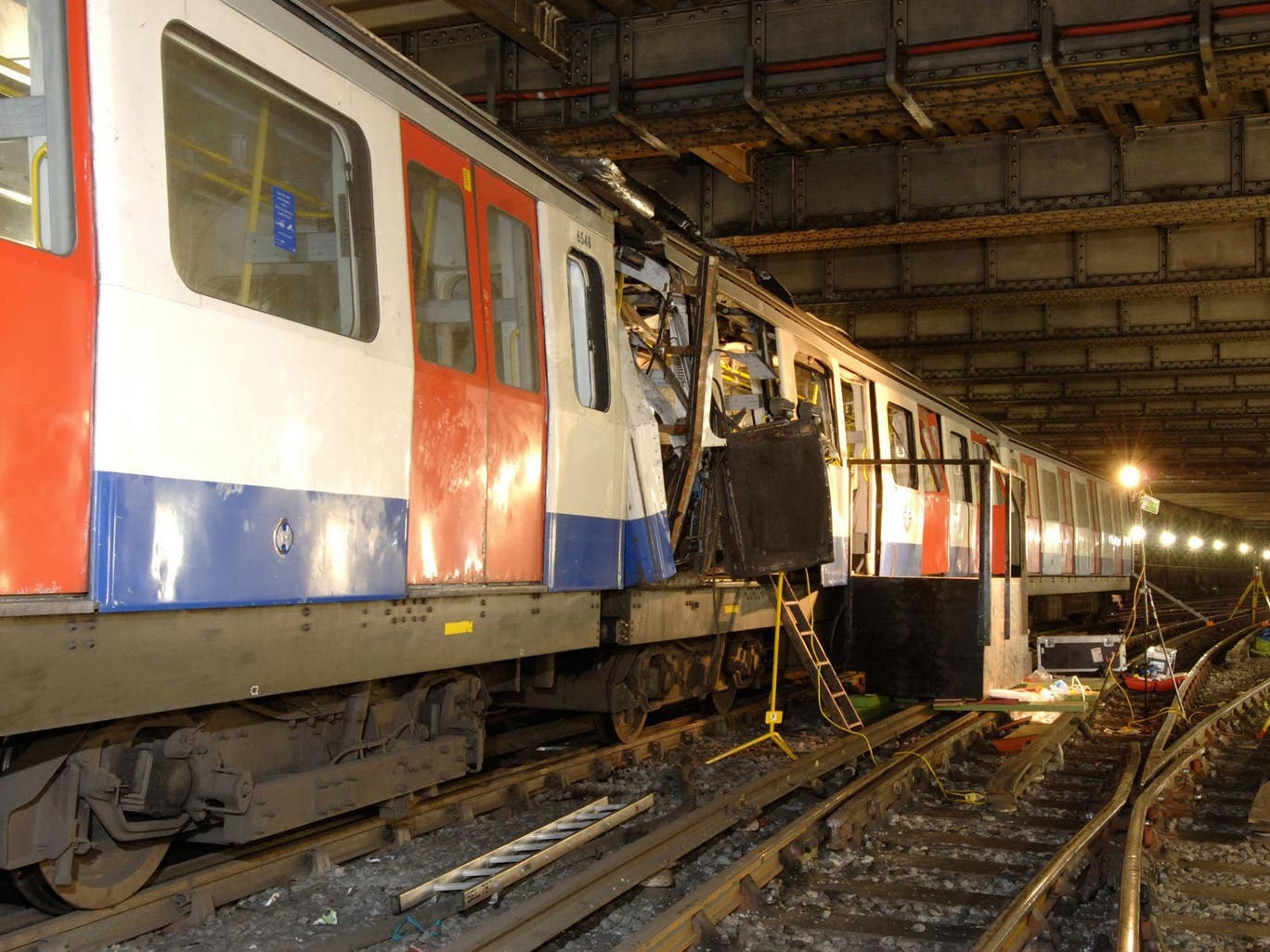 |
Aldgate station after the attack on 7/7/2005. Photo: Met Police/PA |
Aldgate station after the attack on 7/7/2005. Photo: Met Police/PA
At 8:52 a.m., the first calls reported incidents on the Underground. Initially thought to be power surges, a supervisor at Aldgate station told the control room, "There's people on the track." Terry O'Shea, a construction worker from Worcester, also survived the attack. The 42-year-old recounted, "I was in the third carriage, behind the one where the explosion happened. There was a massive bang and we felt the train shudder. Then smoke started to fill the carriage." According to O'Shea, people panicked but calmed down after a minute or two. When led down onto the track past the bombed carriage, they saw the carriage roof ripped open and bodies on the track.
Meanwhile, Hussain appeared to have problems with his bomb and tried contacting his accomplices via mobile phone. He then bought a 9-volt battery from a shop and walked across Euston Road to McDonald's.
At 9 a.m., London Underground operators continued receiving calls about incidents on the tracks, but at this point, they did not suspect terrorism. Passengers on other trains were told to disembark due to "power surges." Hundreds of people poured onto the streets, and confusion grew.
At 9:13 a.m., the Underground control room declared a major incident, instructing all trains to proceed to the nearest station possible. A further instruction at 9:40 a.m. ordered the evacuation of some 200,000 passengers.
Mandy Yu, 23, was on the Underground near King's Cross station when one of the bombs detonated on her train. She described a "shuddering" sensation from the front of the train. "Everything went black, then the emergency lights came on. Thick smoke poured in from the tracks, making it so hard to breathe that people knelt down to try to get some air," Yu said. A woman in the first carriage screamed continuously. People prayed. For about 20 minutes, in the dim light, they told each other there was no fire and to try to stay calm. Some tried to open the doors and smashed windows to escape and let air in, but they could not. "We were stuck for over half an hour before we were evacuated through the back of the train. The power on the tracks had been switched off, and we walked through the tunnel," Yu said.
Confusion, panic, and then horror gripped the capital as survivors streamed up from Underground stations, some missing limbs, others covered in black dust and soot.
At 9:24 a.m., Hussain was last seen on CCTV. He boarded the number 91 bus from Gray's Inn Road to Euston, then the number 30 bus to Old Street.
At 9:47 a.m., after finding a seat on the upper deck of a crowded double-decker bus, Hussain detonated his device at Tavistock Square, killing 13 people and injuring 110. The blast occurred outside the headquarters of the British Medical Association, which became a makeshift emergency room.
Ayobami Bello, 46, a security guard at the nearby London School of Hygiene and Tropical Medicine, witnessed the explosion that destroyed the bus. "It was terrible. The bus was blown to smithereens. There were dead bodies all over the floor, all over the road. The back of the bus was completely blown off. People were running helter-skelter," Bello recounted.
 |
The destroyed bus after Hasib Hussain detonated the bomb. Photo: PA |
The destroyed bus after Hasib Hussain detonated the bomb. Photo: PA
At 10:21 a.m., Scotland Yard confirmed "multiple explosions" in London. Soon after, the British Transport Police confirmed the bus bombing.
At 10:53 a.m., Home Secretary Charles Clarke announced that London's public transport had been suspended, adding that the "terrible incidents" had caused "terrible injuries." Motorists were advised to avoid the city as the scale of the attacks became clear.
At 12:05 p.m., from the G8 summit in Scotland, Prime Minister Tony Blair informed the nation that it was "reasonably clear that there have been a series of terrorist attacks in London." He vowed that the perpetrators would be brought to justice and immediately returned to London by helicopter to manage the crisis.
Soon after, al-Qaeda, the terrorist group behind the 9/11/2001 attacks in New York, claimed responsibility, calling the four bombers "heroic martyr soldiers." US President George W. Bush also condemned the attacks while speaking at the summit.
As the casualty figures mounted, police worked to identify the perpetrators. By 11:40 p.m., authorities revealed they had found identification belonging to Khan and Tanweer, as well as phones and other personal items. A crucial lead emerged when a suspect's brother reported suspicious activity in Leeds. The brother had rented a separate apartment on Alexandra Grove despite living with his family. Police noticed withered leaves on bushes outside the apartment, suggesting exposure to hazardous chemicals. Inside, they found items including filter paper, aluminum pans, a hot plate, and hydrogen peroxide – a key ingredient used in bomb-making. The apartment was identified as the group's "bomb factory," with the windows covered to conceal their activities.
In the following weeks, the death toll rose to 52, with over 770 injured. The 7/7 London bombings were the worst terrorist attack in the UK since the 1988 Lockerbie bombing, prompting intense scrutiny of police and security service failures.
The attacks exposed the reality of homegrown suicide bombers in Britain, posing a significant challenge for security agencies to adapt and prevent future incidents. Just two weeks later, on 21/7, another bombing attempt was made. Fortunately, the explosives failed to detonate. Amid heightened tensions, police mistakenly shot an innocent Brazilian man, Jean Charles de Menezes, at Stockwell Underground station, sparking outrage.
All four 7/7 bombers died in the attacks. The four men behind the failed 21/7 bombings were each sentenced to life in prison. Another man who threw a bomb in a bin received a 33-year sentence.
Following the bombings, counter-terrorism funding increased significantly. MI5's budget nearly doubled within five years, while police forces also received more resources for surveillance tools and training programs to track and apprehend terrorists more effectively. New security units were established, including the National Counter Terrorism Security Office, focused on identifying threats and improving coordination between police and intelligence agencies. The 2006 Terrorism Act allowed authorities to detain suspects without charge for up to 28 days and criminalized the glorification of terrorism. Additional laws expanded police access to phone and internet records, but also raised privacy concerns.
Tue Anh (Independent, Express)



